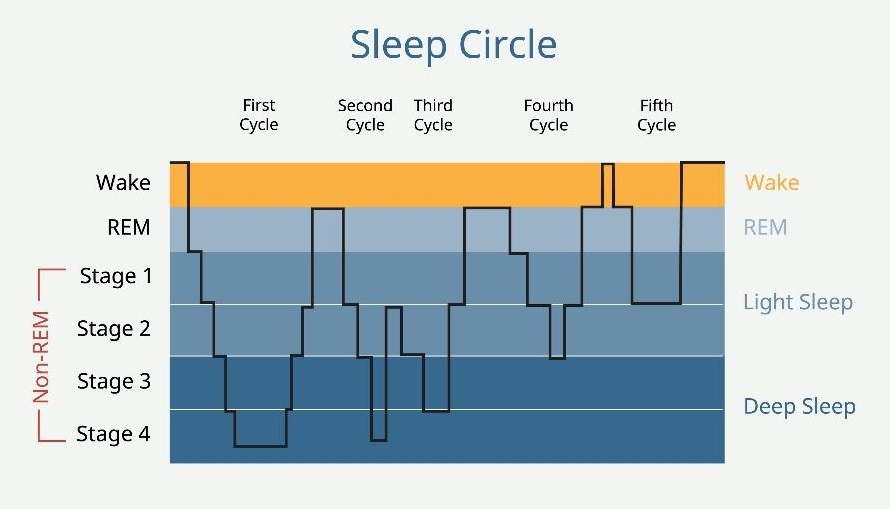Sleep is important for everyone, but if your job requires quick thinking, lightning reflexes, and irregular sleeping/waking hours, getting to sleep quickly and feeling refreshed afterward is even more essential.
Military personnel have grueling schedules and often need to function on very little sleep or under circumstances where jet lag is likely. The consequences of poor sleep can be serious, including failed missions, higher injury rates, and issues for our national security.
Researchers find that poor sleep in the military is also linked to long-term sleep problems, PTSD, heart disease, metabolic dysfunction, social disturbances, and reduced cognitive health.
It’s for these reasons and more that the US government has been promoting a particular method of sleep, called the Military Sleep Method, for those entering the armed services.
Let’s look at how this military sleep technique works and see why it is helpful for anyone in any profession to achieve quality sleep anytime you need it. It’s a drug-free way to fall asleep fast and wake up refreshed and ready for your day.
The Science of Sleep
Experts say that adult humans do best on 7 to 9 hours of sleep each night. Sleep “debts” cannot be fully repaid, so getting regular hours is best.
When we sleep, we cycle through stages ranging from drowsy to deeper stages of more restful sleep. The deepest stage of sleep (N3, slow-wave, or SWS sleep) is essential for brain health and memory consolidation.
REM (rapid eye movement) sleep is when most of us dream. This sleep stage is more prominent in the latter half of your sleep but can happen at any time.
We cycle through several 90-minute sleep cycles in which sleep gets to the deepest level before becoming lighter and back down again. At the end of each cycle, REM sleep occurs.

Deep and restorative sleep (SWS) is essential for health. Without enough of this sleep stage, you risk cognitive (thinking) challenges, memory disturbances, and even dementia later in life. Fortunately, most of us get enough of this sleep stage provided we have a stretch of at least 3-4 hours of sleep.
REM sleep is not needed for survival; however, when we lack enough of this dreaming sleep stage, we can suffer from greater levels of anxiety and mood disturbances. Getting both deep and REM sleep ensures optimal mental and physical health.
Military recruits often have problems with sleep shortly after deployment. Taking caffeine to stay alert has temporary benefits, but the practice often leads to insomnia, a need for sleep aids, and difficulty with vigilance and physical functioning over time.
Sleep-deprived soldiers perform more poorly on tests of mental and physical performance. This loss of optimal functioning can be catastrophic for the success of a mission and can lead to long-term poor health, including higher risks for PTSD, suicide, and early death from all causes.
The Military Sleep Method
The military sleep method requires no drugs. This sleep technique has demonstrated success among troops on deployment to enhance sleep quality and ensure their long-term health and wellness. There are several techniques used in the method that can be taught to anyone wanting to sleep better.
As you’ll see, specialized breathing and relaxation practices are at the heart of the military method. Other aspects of sleep hygiene are also used to help attain optimal sleep. Once you master the various practices, you can begin to see how they can help you get to sleep more quickly.
Let’s review the steps toward implementing the military method for sleep induction:
- Close your eyes and take several slow, deep breaths,
- Next, relax your face as completely as possible. Let it relax from your forehead down to your jaw. Relax your tongue, too.
- Work down your body and relax your neck, shoulders, and arms.
- Sink into the bed as you relax your chest, abdomen, and pelvis.
- Relax one leg at a time, starting with the hips and working to your feet.
- Empty your mind of everything but your relaxation efforts. You can imagine a peaceful place or chant thought-stopping phrases like “Stop it” if you can’t turn off your thoughts.
While these steps are a major part of the military sleep method, you can further improve your chances of falling asleep faster by optimizing your sleep environment.
Things you can do include eating and drinking for better sleep. Stay hydrated but not over-hydrated before bedtime, and avoid both alcohol and caffeine before bedtime. Eat healthy foods but avoid fatty or rich foods at the evening meal.
Exercise and general physical activity will help you sleep more easily as long as you don’t perform heavy physical exercise before bedtime. Any activity that heats your body will interfere with sleep. Instead, take a cool shower before sleeping.
Ensure you have a consistent sleep schedule by going to bed and waking up at the same time whenever you can. This teaches your brain and body that it’s time to rest. Make sure you have a quiet, dark resting place and that you avoid distractions, if possible.
Remember that screens (TVs, tablets, laptops, and phones) provide too much blue light exposure to your eyes. Use blue light-blocking glasses or filters on your devices to help you avoid this type of exposure and gain better sleep.
Practical Tips for Falling Asleep Quickly
Your breathing exercises have the potential to reduce your heart rate and settle your nervous system.
Some helpful deep breathing techniques involve the 4-7-8 technique, in which you breathe in for a count of four, hold for a count of 7, and breathe out for a count of 8. This method forces you to breathe more slowly and activate your rest-and-digest parasympathetic nervous system.
Progressive muscle relaxation also helps by relieving everyday tension in the muscles. Once accomplished, you send calming signals to the brain. Sleep comes more easily when you are already relaxed.
Visualization involves identifying images that are calming for you and then using them in your imagination to see, hear, feel, smell, taste, and touch whatever you can creatively imagine as you clear your mind of other thoughts.
Setting a bedtime routine is essential. If you have the opportunity to set an alarm not just for waking but also for reminding yourself to begin the process of brushing your teeth, settling in bed, and doing whatever else it takes to prepare for bed.
Staying Asleep Throughout the Night
The military sleep method is based on the concept that sleep disruptors can happen unexpectedly. Light, noise, and heat or cold can interfere with sleep. In general, sleeping in a cooler environment is best.
If you expect a hotter-than-optimal sleep environment, you should be prepared by taking a cool shower before bedtime or by using fans. Sleep with the right pajamas for your situation.
Ear plugs, sleep masks, and white noise machines can help reduce ambient light and noise, which is responsible for up to 30 percent of sleep disruptions. If you need to use a sleep aid for extreme difficulties sleeping, start with melatonin, which is a natural product for sleep inducement.
Waking Up Refreshed

The Military Sleep Method also emphasizes wakefulness as much as sleep. If you use this method for waking up refreshed, begin by knowing that you need to wake up at the same time of the day, even when not working that day.
Set an alarm if needed to help you gradually wake up. This method reduces the fight-or-flight response that comes from waking up too suddenly. Use an alarm that offers a gradually louder alarm. Avoid the snooze button, which doesn’t really add more quality sleep.
Establish a morning routine that allows you to get out of bed and perform your morning routines. Tai chi, yoga, or qigong can help you form a bridge between sleep and wakefulness.
Oversleeping on weekends can further disturb your biological clock. The idea is to get up and get moving as quickly as possible.
Conclusion
The military sleep method uses tried and true breathing and relaxation techniques to ensure a rapid onset of sleep and more peaceful restlessness. Sleeping well in the military leads to improved thinking, athleticism, recovery, and mood.
Getting quality sleep any time of the day and under any circumstances has significant implications for military service personnel, including fewer sick days, improved focus and thinking, less stress, better social skills, and enhanced performance. There are also many long-term implications for better health and longevity after leaving the service.
Anyone can use this method to fall asleep faster and wake up more refreshed. By employing progressive muscle relaxation and slow breathing exercises, you can begin to have optimal sleep for a lifetime.

